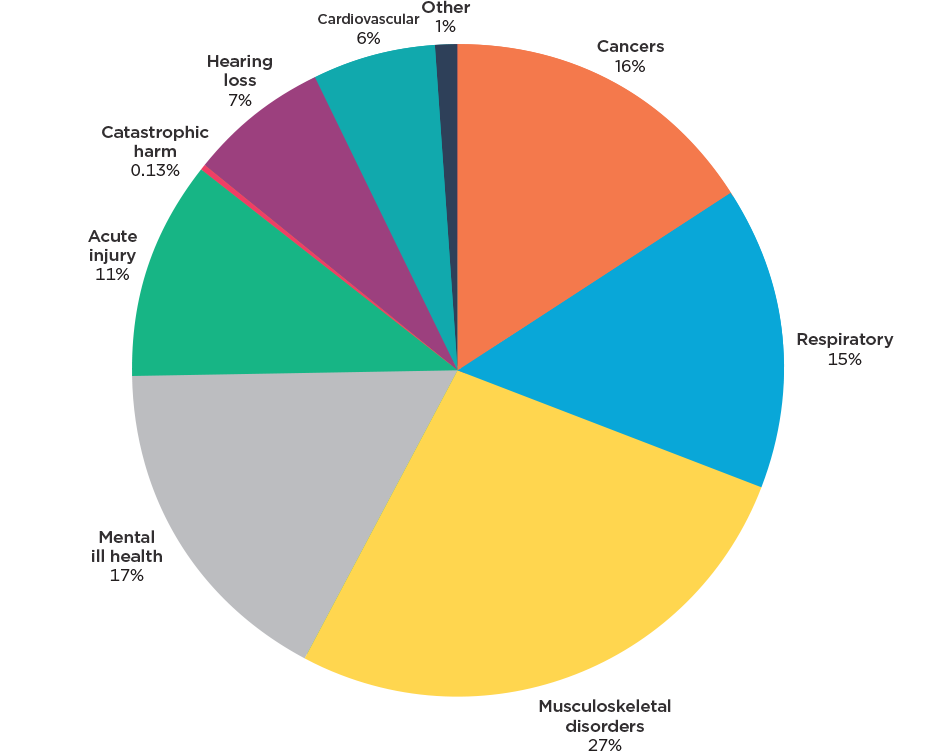WorkSafe needs to understand the impact of work-related disease so it can develop effective ways to improve worker health. It does this using work-related health estimates and burden of harm estimates informed by comprehensive international research.
Work-related health shares our focus with work-related safety. By law, businesses must manage both the health and safety risks caused by their work. That includes managing mental as well as physical health risks.
For WorkSafe, work-related health is about the way work can impact on worker health and the way worker health may impact on working safely.
WorkSafe needs to understand the impact of work-related disease so it can develop effective ways to improve worker health. It does this using work-related health estimates and burden of harm estimates informed by comprehensive international research.
These estimates are used to compare between illness caused by long-term exposure to hazards, and illness caused by acute injury.
Work-related health estimates
WorkSafe recently revised its work-related health estimates to take into account new international research, and other information to inform decisions to improve worker health.
- Work-related health deaths are estimated at 750-900 a year.
- There are an estimated 5,000-6,000 hospitalisations each year due to work-related ill-health.
- A worker is 15 times more likely to die from a work-related disease than from a workplace accident.
Burden of harm estimates from work-related injury and ill-health
WorkSafe has also applied a statistical measure of the quality and length of life lost to injuries and illness, using work-related health estimates and burden of harm estimates.
This measure is called disability-adjusted life years (DALYs) lost and puts a value to the burden of harm from work-related ill-health and injury.
Different diseases will have different harm profiles. The measure enables comparison between diseases with different harm profiles.
It is used to determine which diseases account for the most ill-health. It also enables comparison between work-related acute injuries and work-related ill-health.

The calculations show that acute injuries (including fatalities) account for 11% of annual work-related disability-adjusted life years (DALYs) lost. Musculoskeletal harm accounts for 27%, mental health harm 17%, cancers 16% and respiratory harm 15%.
WorkSafe has calculated that 50,000 work-related DALYs are lost annually. This translates into a social cost of at least $2 billion each year.
Further information
Last updated